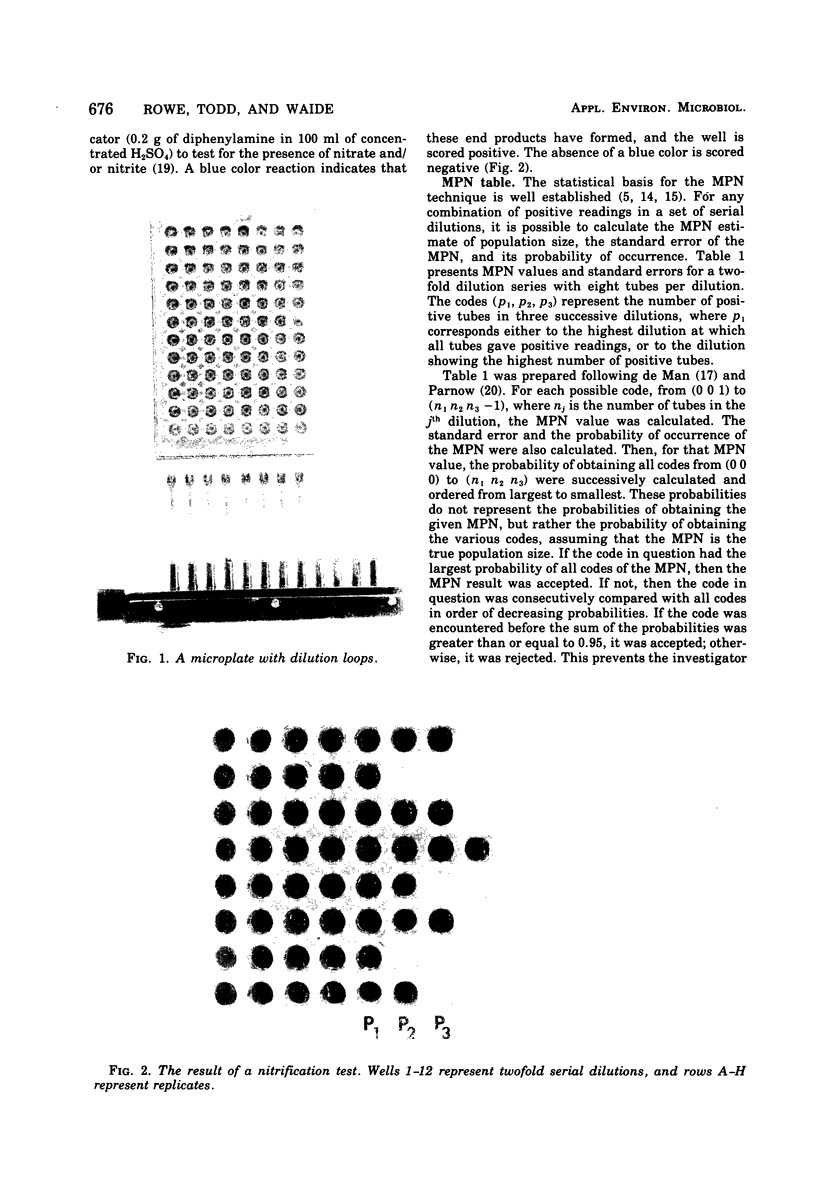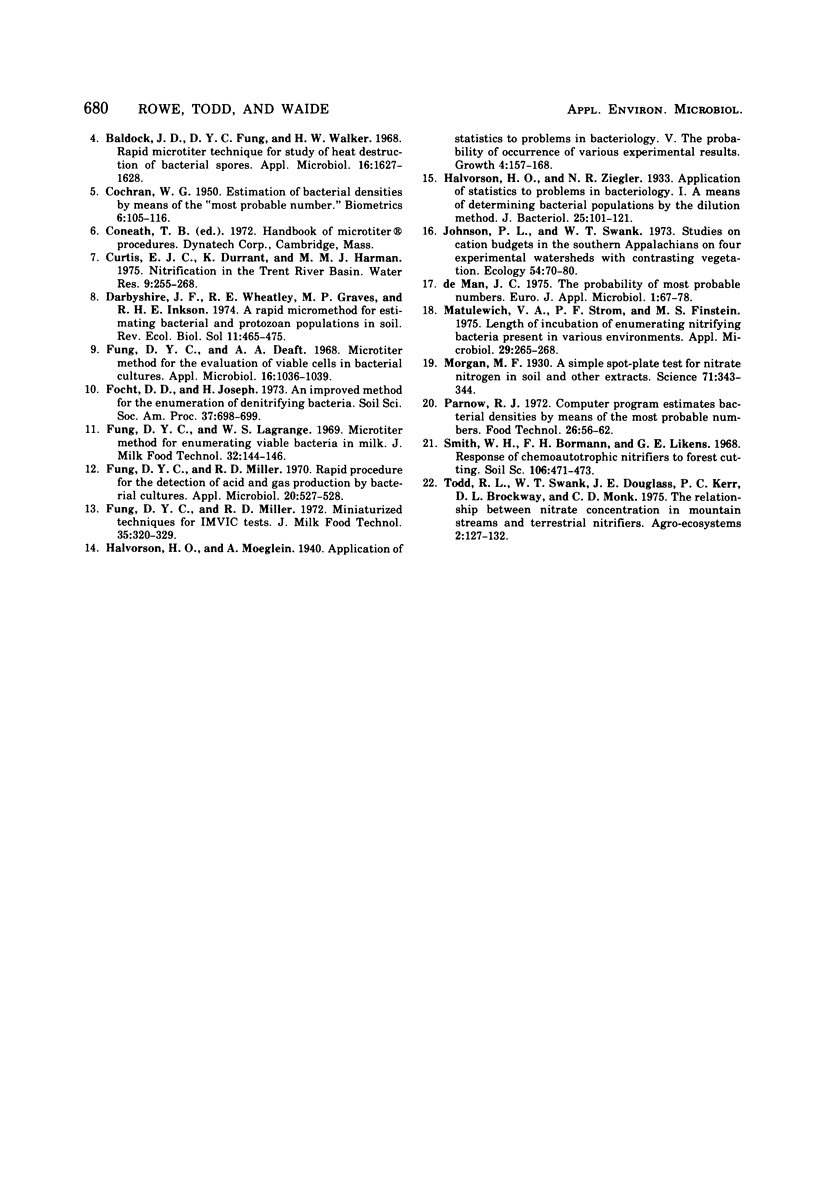Abstract
A microtechnique based on the most-probable-number (MPN) method has been developed for the enumeration of the ammonium-oxidizing population in soil samples. An MPN table for a research design ([8 by 12] i.e., 12 dilutions, 8 replicates per dilution) is presented. A correlation of 0.68 was found between MPNs determined by the microtechnique and the standard tube technique. Higher MPNs were obtained with the microtechnique with increased accuracy in endpoint determinations being a possible cause. Considerable savings of time, space, equipment, and reagents are observed using this method. The microtechnique described may be adapted to other microbial populations using various types of media and endpoint determinations.
Full text
PDF





Images in this article
Selected References
These references are in PubMed. This may not be the complete list of references from this article.
- Baldock J. D., Fung D. Y., Walker H. W. Rapid Microtiter technique for study of heat destruction of bacterial spores. Appl Microbiol. 1968 Oct;16(10):1627–1628. doi: 10.1128/am.16.10.1627-1628.1968. [DOI] [PMC free article] [PubMed] [Google Scholar]
- COCHRAN W. G. Estimation of bacterial densities by means of the "most probable number". Biometrics. 1950 Jun;6(2):105–116. [PubMed] [Google Scholar]
- Fung D. Y., Kraft A. A. Microtiter method for the evaluation of viable cells in bacterial cultures. Appl Microbiol. 1968 Jul;16(7):1036–1039. doi: 10.1128/am.16.7.1036-1039.1968. [DOI] [PMC free article] [PubMed] [Google Scholar]
- Fung D. Y., Miller R. D. Rapid procedure for the detection of acid and gas production by bacterial cultures. Appl Microbiol. 1970 Sep;20(3):527–528. doi: 10.1128/am.20.3.527-528.1970. [DOI] [PMC free article] [PubMed] [Google Scholar]
- Halvorson H. O., Ziegler N. R. Application of Statistics to Problems in Bacteriology: I. A Means of Determining Bacterial Population by the Dilution Method. J Bacteriol. 1933 Feb;25(2):101–121. doi: 10.1128/jb.25.2.101-121.1933. [DOI] [PMC free article] [PubMed] [Google Scholar]
- Matulewich V. A., Strom P. F., Finstein M. S. Length of incubation for enumerating nitrifying bacteria present in various environments. Appl Microbiol. 1975 Feb;29(2):265–268. doi: 10.1128/am.29.2.265-268.1975. [DOI] [PMC free article] [PubMed] [Google Scholar]
- Morgan M. F. A SIMPLE SPOT-PLATE TEST FOR NITRATE NITROGEN IN SOIL AND OTHER EXTRACTS. Science. 1930 Mar 28;71(1839):343–344. doi: 10.1126/science.71.1839.343. [DOI] [PubMed] [Google Scholar]




